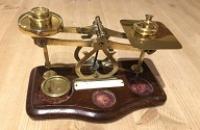




Children often enjoy measuring themselves with different things.
Adults could provide a variety of things to use as measuring units and compare results.
The Activity
The child lies down and the adult 'measures' the child, by putting a marker by head and feet, then stretching a piece of tape as long as the child. They find out how many pens will match this, carefully placed end to end, making sure they are straight, with no gaps or overlaps. Repeat with other things of uniform length, some long, some short (such as rolled up sheets of newspaper, spoons, buttons, Lego or Duplo bricks) to make several 'trails' of equal length and compare the results.
Encouraging mathematical thinking and reasoning:
Describing
What do you notice about using the pens and the paper rolls? How many pens does it take to match the tape?
You are 20 pens tall! How many paper rolls tall are you?
You are 3 and a bit rolls long/not quite 3 rolls long.
Reasoning
I wonder what will happen if we measure with Lego bricks? Why do you think there will be more?
There are some gaps between the dinosaurs - do you think that matters? Does it matter if they are all not the same length?
Opening Out
Which did we use most of? Which needed the smallest number?
You are three and a bit rolls long - what do you think we could use to measure the extra bit - little Lego bricks?
How many pens tall do you think your grown-up will be?
What other things are about the same height as you? Which are shorter or taller?
How tall are you with the measuring tape - what numbers can you see? Are you more or less than a metre tall?
How many footsteps tall are you? (Make sure you walk heel to toe and in a straight line!)
Recording
Let's take a photo of the 'trails' we've made.
Let's write the numbers of papers and pens, and centimetres tall you are. How can we make the calculator show these numbers?
The Mathematical Journey
Counting and cardinality:
- counting objects using the number sequence, tagging each item and saying the total
- comparing quantities and numbers, more / less / fewer / not as many
- ordering several numbers most / biggest number / smallest number
- estimating numbers
Matching numerals and amounts:
- writing and reading numerals
Measures:
- using language: tall, height, long, short, longer, length
- predicting and explaining that the shorter things are the more you will need and vice versa: 'The buttons are really small so we will need lots'
- generalising: 'If you get really long things you don't need as many'
Development and Variation
Predict and compare the number of things needed to measure an adult.
Cut a piece of string the length of the child - or use strips of newspaper joined together with sellotape - and try to find things the same length, commenting whether they are shorter or longer.
Tape pieces of newspaper together, draw round the child with a marker pen and cut out the silhouette, then mark the length in a straight line, so the child can see that their height is the distance between the top of their head and the bottom of their feet lying down or standing up.
Cut pieces of string (or paper strips) the same length as the child's reach (finger tip to finger tip with arms outstretched) and compare - are they the same? Compare this to head circumference. Find strips to match other body parts such as length of feet or waist.
How many of your own feet tall are you?
(With several children, focus on comparing the numbers and lengths of things used to measure, but not children's heights, as no-one likes being the shortest!)
Measure heights with a measuring tape and discuss the fact that there are 100 centimetres in a metre, and whether the child is more or less than a metre.
Resources
Rolled up sheets of newspapers (secured with a piece of sellotape), pens, Lego bricks, spoons, buttons, coins or anything of roughly uniform length.

Download a PDF of this resource.

